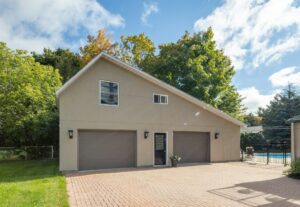
When it comes to renovating your home, knowing what you want is the easy part. The more difficult question is figuring out how much you can afford (and how it will affect your financial stability). Sometimes even the most frugal homeowners can get caught in the whirlwind of choosing finishes and fixtures without realizing the costs. This can lead to getting blindsided by unexpected renovation glitches that can increase the cost of the project.
Luckily, there is a variety of options that are available to homeowners that can help lift the weight of expensive house renovations. Here are a few best practices to build a home renovation budget into your financial plan, to make sure both your bank account and your house are kept in tip-top shape.
Table of Contents
ToggleDetermine how you will pay for your renovation
Whether you’re paying in cash, taking out a loan, or applying for credit, your renovation budget will need to fit within your liquid funds.
Once you have determined how much you can spend, make sure to set aside a further 10 to 20 percent of your available budget for unexpected expenses. This is a crucial step.
Unfortunately, it’s almost guaranteed that something will go wrong or cost more than you initially projected. By building a cushion into budget before beginning renovations, you can confidently know that you will have enough funds to finish the project – no matter what happens.
Save first if possible
If you can, save in advance for your home renovation. This will give you a chance to think carefully about your renovation plans while also being able to keep an eye open for sales on items you’ll need.
For home renovations, two savings tools work particularly well. The first is a high-interest savings account. In comparison to the regular savings account your bank offers (that likely pays next-to-no interest), a high-interest savings account pays on average 2.3 per cent. You also have the option to withdraw your money at any time.
A tax-free savings account (TFSA) is the other tool. The main advantage of using a TFSA is that you aren’t required to pay tax on your investment income, and you can take out your money at any time – without penalty.
The Canadian government’s Home Buyers’ Plan (HBP) allows first time home buyers to borrow up to $25,000 from your registered retirement savings plan (RRSP) for a down payment, tax-free. However, we highly recommend not withdrawing money from your RRSP to fund a home renovation. Not only will you not get the contribution room back, but you will also be required to pay high tax on the withdrawals.
Create a budget for your home’s needs
From landscaping and permits to roofing and inspections, there are so many potential costs to keep in mind. So how can homeowners proactively prepare a budget? Here are a few factors to consider to estimate what you’ll need to spend accurately.
Prioritize: The easiest way to stay on budget during a home renovation is to know precisely what you want. Create a list of everything you would like your project to include and then separate items into wants and needs.
It can be helpful if you ask yourself these questions:
- What do you want this project to do?
- What details are required to make that happen?
- Are there details you’re willing to compromise on?
- Are there details you’re willing to splurge on?
Create a detailed renovation plan (with cost estimates): After you have goals in place for your home renovation, the next step is to create a comprehensive plan that includes all your expected costs. This not only helps you stay on budget but also communicate more efficiently with contractors.
To accurately develop cost estimates:
- Choose desired fixtures/finishes and calculate what you plan to spend on them. This can include paint, tiles and flooring, faucets, and more. Don’t forget to factor in taxes and shipping costs.
- Include the appliances you want, paired with installation costs and delivery if needed.
- Additional living expenses during your project. Consider the financial strain of living without a proper bathroom, boarding your pets, or even staying at a hotel during the renovation.
If you can create a renovation plan that is detailed enough, conversations with contractors can focus more on labour costs and time estimates.
Set priorities and trim where needed
When working on creating your dream home, it’s easy to get carried away with the latest materials and design trends. But trust us, no marble back-splash is worth taking on debt you cannot afford. To avoid any future finance-related stress, make sure to set priorities and trim the project to fit your budget.
Think carefully about your renovation and look at all the options to save – whether it be saving money in advance or saving on the work itself. These tools can make it easier, but at the end of the day, it’s still your money that you’re investing in your home. If you move forward with a home renovation project, keep in mind that the return on your investment will also depend on the value of your house, the kind of renovation you choose, and other homes in the neighborhood. Make wise choices so that you can enjoy your home for years to come without putting stress on your finances.
By taking these careful steps to plan for and reduce the cost of each part of your project, you should be able to complete your project within your remodelling budget, all while keeping on track with your financial plan. If you need any help building a home reno into your existing financial plan or are looking to start from scratch, Planswell can be the perfect tool for you. Build your plan today.








